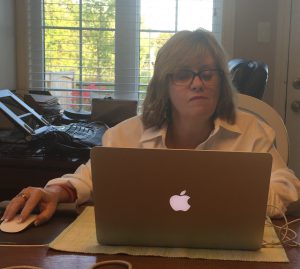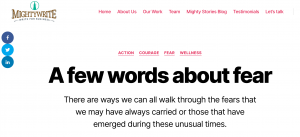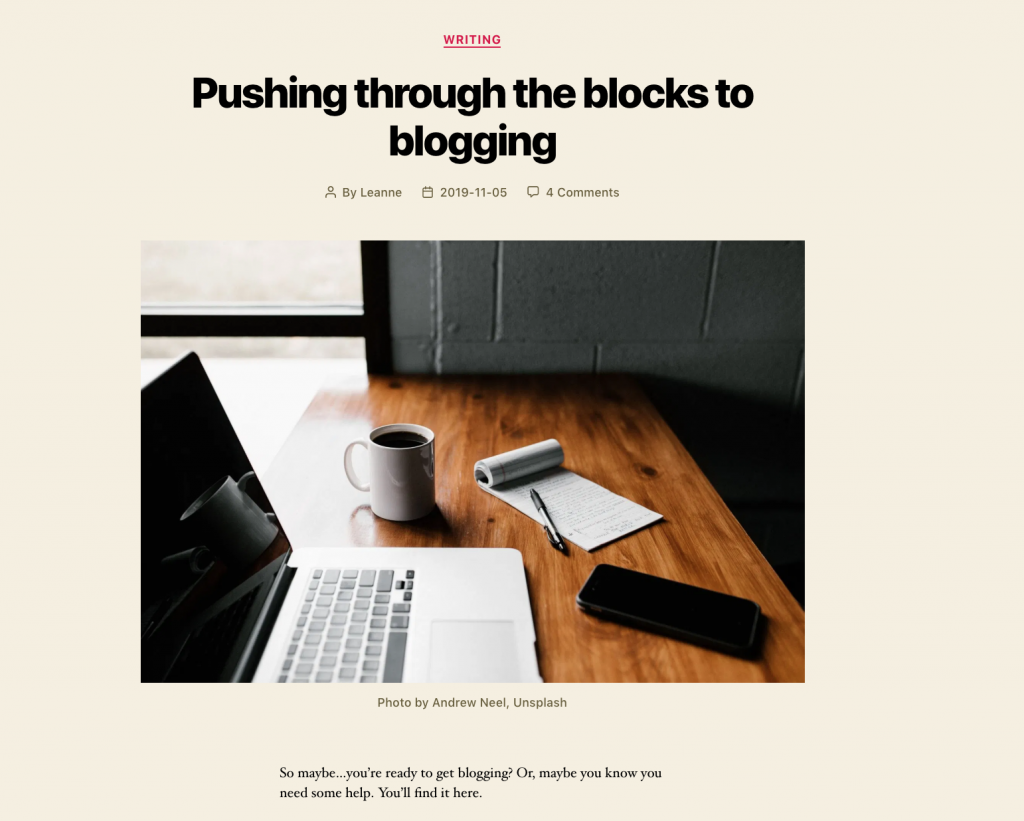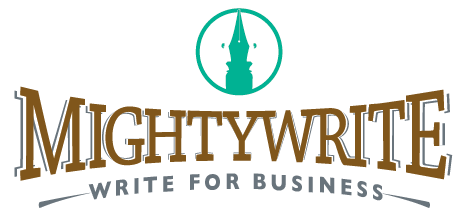
Over the last few months, I had the great pleasure of coaching seven new social entrepreneurs in writing their business stories.
We were successful because they all knew their stories well and were the best ones to tell them. But it’s always tough to write about yourself. I helped them hone in on their strengths and write in a way that would resonate with their intended audiences – primarily funders, potential clients and partners.
“I wanted to say thank you for all the support, resources, and tools you have given me in the past month. All of these things are really going to help me get to the next level in my social enterprise. I also wanted to thank you for your belief in me.”
Susanna King, Snackables
As a young entrepreneur with little business experience, Leanne helped bring my business a great deal closer to fruition. Her experience and expertise allowed me to write a very strong business plan, and she has taught me how to refine my writing in a professional manner.
Eva Bonjour, Grey Wolf Gardens
This work alerted me to a definite need, so I decided to round up what I’ve learned in decades of writing for clients and myself. This isn’t a one size fits all approach. Each step has room for you to customize for your individual story and storytelling goals.
It’s a longer read (hey, I have 30 years to share!) but worth it to dive into all of the strategies you can use to get your story right from the outset.
Truth is, with the skimmers of the world, you may only get one chance. If you’re one of those, I’ve highlighted the key takeaways throughout the article.
1. Know your audience
This is number one because you should be clear on who you’re writing for. I sometimes have clients whose work could fit several audiences but I coach them to think beyond “everyone” right from the start.
The more specific you can be about your audience, the better sense you’ll have of their problems and how you can help.
How do you know them and why should they care about what you have to say? Ultimately, why does this matter to them?
For this article, my primary audience is business people and not-for-profits who are looking for better ways to share their stories in a business or promotional context, ultimately to inspire some action.
2. Be clear on why you’re writing. What is the end goal?
What’s the problem you’re solving and why is your solution the one people should turn to?
Be as concrete and specific as possible.
You may find it helpful to write an outline of your key points to make sure you’re covering them before you begin writing. Then, circle back to fill out each section. If I’m having trouble getting started, I will sometimes come up with a list of questions and answer each one to get the words flowing.
Sure, share who you are and what you have to offer but position it in a way that shows you care about what your audience thinks and may be experiencing around the issue where you have a role, an opinion or a service to offer.
And a personal piece of advice here – watch the ego. While you want to tell your story, you need to always make the writing resonate with your audience and their concerns.
Being mindful of why you’re writing something and considering what your reaction might be to certain outcomes can help you recognize if you are purpose or ego driven. Ego, while positive in creating confidence, is rarely the best driver for any communication outside your own head!
3. Find your voice, earn their trust
This is your story, the one that no one knows better than you. How can you make it resonate with others?
A consistent voice helps your audience get to know you and what to expect.
Find the balance between your purpose in telling the story, your qualifications, how others have helped inform it, and why you want to bring it to the world.
And again, watch the ego.
Personally, I have connected the most deeply and earned the trust of potential clients and others when I’ve shown that I’m human, that I make mistakes, but most importantly, how what I’ve learned can benefit others.
4. Know your topic
If you are the main expert on the topic you’re writing about – great! Even so, it can help to share other perspectives from credible sources who, if you’re lucky, are also part of your story.
You can read an example of how I did this at mightywrite.ca/a-few-words-about-fear. It’s not the first time I reached out to one of my friends and colleagues to offer their insights on a topic – and it won’t be the last.
Do the research to ensure accurate and useful information that addresses the problem you are trying to solve.
5. Know your medium
As well as audience, voice and topic, it’s also important to be familiar with the medium you plan to use to deliver the message. For example, if you have several social media platforms (let’s say Twitter, Facebook, and Instagram) the layout (visuals), the amount of information, and what you’ll include will be different for each. More visual for Instagram, shorter for Twitter, more personal for Facebook, more professional for LinkedIn, etc. I’m not here to train you on the right approach for each, but will assume the mediums you’ve chosen to use are because they are where your people are. That is always the main goal of using one over another.
Pick the platform where you know your people are and use the right images to get their attention.
6. Reel them in from the first few words
Sum up your main purpose for writing in one or two sentences.
Top that off with a great article heading or email subject line that is impossible to ignore.
You know the “secret sauce” that makes you, your product, service, project or cause the solution to one of the world’s great problems. Declare that from the beginning.
Stay away from “How to…” People are generally tired of being told how to do something better. Instead, turn it around to ask an intriguing question like, “Who doesn’t want [blank]?” or “Want some [blank]?” This piques reader curiosity, as does a slew of other approaches like, “The secret to [blank] in 5 easy steps!” If you’re aiming to tackle a problem, state it and how your solution addresses it – does it “Get rid of [blank] for good”? Or is it “The fastest way to end [blank]”?

These are just a few ideas I’ve come across that are also covered in more detail in the Copyblogger article by Brian Clark, 22 Sure-Fire Headline Formulas that Work.
See what I did there? It never hurts to reach out for help when you’re stuck on what to write. Just be sure to credit any sources that you use. If you found the article useful enough to quote from or incorporate, there’s a good chance that your audience will also be interested in learning more.
7. Get to the point
Be as direct, concrete and specific as possible .
While it can be tempting to try and create some mystery, people rarely have time to try and figure out your message or motive.
At the risk of not getting to the point (!), I’d like to share a painful, personal example. I recently started writing poetry and enrolled in a poetry class by an award-winning poet.
We were instructed to submit raw works we’d workshop in each class, which is what I did. I was first up for the evening and didn’t give any context for the poems, just read them as I’d been told to do in other writing workshops.
I was massacred (which technically shouldn’t happen with new work), the main criticism being that my poems were too abstract and no one knew what they were about. While this is great feedback and I’ll be a better poet because of it, the words stung, especially when everyone else gave long dissertations prior to their readings and people “got” their poems. I wanted feedback in the proper context, so I sent the instructor more details about my pieces, to which she responded: “These are fascinating and important stories, and see how concrete and specific you are when explaining the context of the poems? That’s how concrete and specific you can try to be in the poems themselves.”
While you may not be planning to share poetry in public anytime soon, the same principles apply: Nix the abstracts, be clear about your purpose, your product/service/cause, and how it can help make a better world or at the very least, better the lives of your audience.
8. Catch eyes, ears and hearts
Break up long text with subheadings, paragraph breaks, bullets and images.
If you’re using video, pull viewers and listeners in with your enthusiasm, sincerity and brevity.
Stay focused, speak to your audience, look them in the eye, and make promises you can keep.
This applies however you’re delivering your message.
Vulnerability has been a big catch phrase in the past decade. It really is, as the vulnerability guru Brené Brown said, “…the birthplace of connection and the path to the feeling of worthiness. If it doesn’t feel vulnerable, the sharing is probably not constructive.”

This past year has been one where many of us have felt more vulnerable than ever. I’ve written about that often and have seen higher readership in 2020/2021 than ever before.
9. Edit, edit, edit
Once you’ve drafted what you want to say, go back and cut away those extra words – adverbs and pronouns – that take up unnecessary space.
Be direct. NOT: “We are planning to…” BUT “We plan to…” NOT “We are hoping…” BUT “We hope…”etc.
While editing, ask yourself:
- Is the first sentence clear?
- Is the headline still in sync with what I’ve promised?
- Is the material enticing and scannable?
- Have I been clear on what I want the reader to do next?
- Has anything changed as I’ve written the rest of the piece?
Once you’ve answered these questions to the best of your own ability – and it can be difficult reviewing your own work – have someone else give it a look. New writers in particular may be hesitant to do this, but it’s so worth it! Even if you can’t afford the services of a professional editor (although there’s definitely a business case for why they are worth it), you should absolutely have a friend or co-worker familiar with the topic read it over.
I had my editor pal Cassandra Filice give this article a read and it’s a much better piece because of it. Yes, even the editor needs an editor! Make sure you establish the conditions for the review – meaning the level of review you’re looking for, if there’s anything specific you want your reviewer to focus on, and whether they want to be credited for anything they contribute.
10. Wrap it up and share to your favourite platforms
Know when you’ve said enough and be clear on the next steps you want your audience to take.
I use my website as the “home” for my blogs and distribute teasers through my monthly email newsletter (subscribe here) that I follow up with posts to the social media platforms I use – Facebook, Twitter, LinkedIn and Instagram. There are tons of difference social media choices, but again, go where your people are.
Another tip, if you don’t create a ton of new content, is to optimize the ones you’ve worked so hard to create. Post on social media a few times, zeroing in on a different angle with each post. Keep in mind not everyone will see every post and it’s possible they’ll get something new in subsequent reviews.

Next steps
- Follow these 10 steps the next time you sit down to write about yourself, your business or your cause.
- Please leave a comment below. Let me know if this article has helped break down some of the barriers you might be facing in writing – whether it’s for a sales pitch, a social cause, a grant application or maybe even a business plan!
- If you’re still stuck, reach out to MightyWrite for help. It’s what we do all day, every day.
I hope what I’ve written spoke to you in some way. That is always the ultimate goal.
Feature photo: Photo: Scott Graham, unsplash

